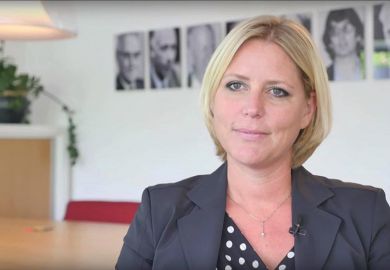The diversity of professors in the basic science departments of US medical schools is unlikely to change in the next 60 years, according to research.
This is despite a huge increase in the number of potential professorial candidates from under-represented minority groups over the past 30 years.
The researchers, led by Kenneth Gibbs, programme director at the US National Institute of General Medical Sciences, created a model to look at how well connected the pool of PhD graduates from under-represented groups is to the diversity of assistant professors in basic science departments at US medical schools.
They found that the number of scientists from under-represented minorities, including African American, Hispanic, American Indian and Native Alaskan, hired as assistant professors was “not related” to the number of potential candidates.
By contrast, there was a “strong correlation” between the PhD pool and the number of assistant professors for scientists from well-represented backgrounds, they say in the paper published in eLife.
Dr Gibbs, who works in the division of training, workforce development and diversity, told Times Higher Education: “It is striking that the model predicts we won't see significant progress over the next 60-plus years.
“Diversity in many respects – including the backgrounds of researchers – is critical to scientific excellence,” he added.
According to data presented in the paper, between 1980 and 2013 the number of PhD graduates from under-represented groups increased by a factor of 9.3, compared with a 2.6-fold rise in white and Asian people with PhDs, the well-represented group.
Dr Gibbs said that unless there was a “better connection” between the PhD talent pool and the academic hiring process for under-represented groups there would “never be a time when we see the diversity of the faculty matching, or even coming close, to the increasing diversity of the PhD pool”.
Exactly why this is happening requires more investigation, said Dr Gibbs. “We really need high-quality data about faculty position applications, interviews and offers across demographics to have a better sense of where the appropriate points of intervention are,” he added.
But he believed that there could be several reasons. His previous research has suggested that scientists from under-represented groups disproportionately chose to pursue careers outside university research.
Dr Gibbs added that there could also be bias in the hiring process and that early career researchers from under-represented groups may not be in “proper social networks”, which other research has found is important in hiring in academia.
The authors point out that the diversity problem could be fixed relatively quickly. “If roughly two-thirds of medical schools hired (and retained) just one faculty member from an [under-represented minority] background annually for the next six years, the system would reach parity with the PhD pool within one tenure cycle,” they say.
Dr Gibbs said that diverse groups asked broader types of research questions and used a wider variety of approaches in their work, which ultimately leads to new innovations.
“Further, as the US population continues to diversify, long-term competitiveness depends on us being able to draw talent from all groups,” he added.
Register to continue
Why register?
- Registration is free and only takes a moment
- Once registered, you can read 3 articles a month
- Sign up for our newsletter
Subscribe
Or subscribe for unlimited access to:
- Unlimited access to news, views, insights & reviews
- Digital editions
- Digital access to THE’s university and college rankings analysis
Already registered or a current subscriber?




